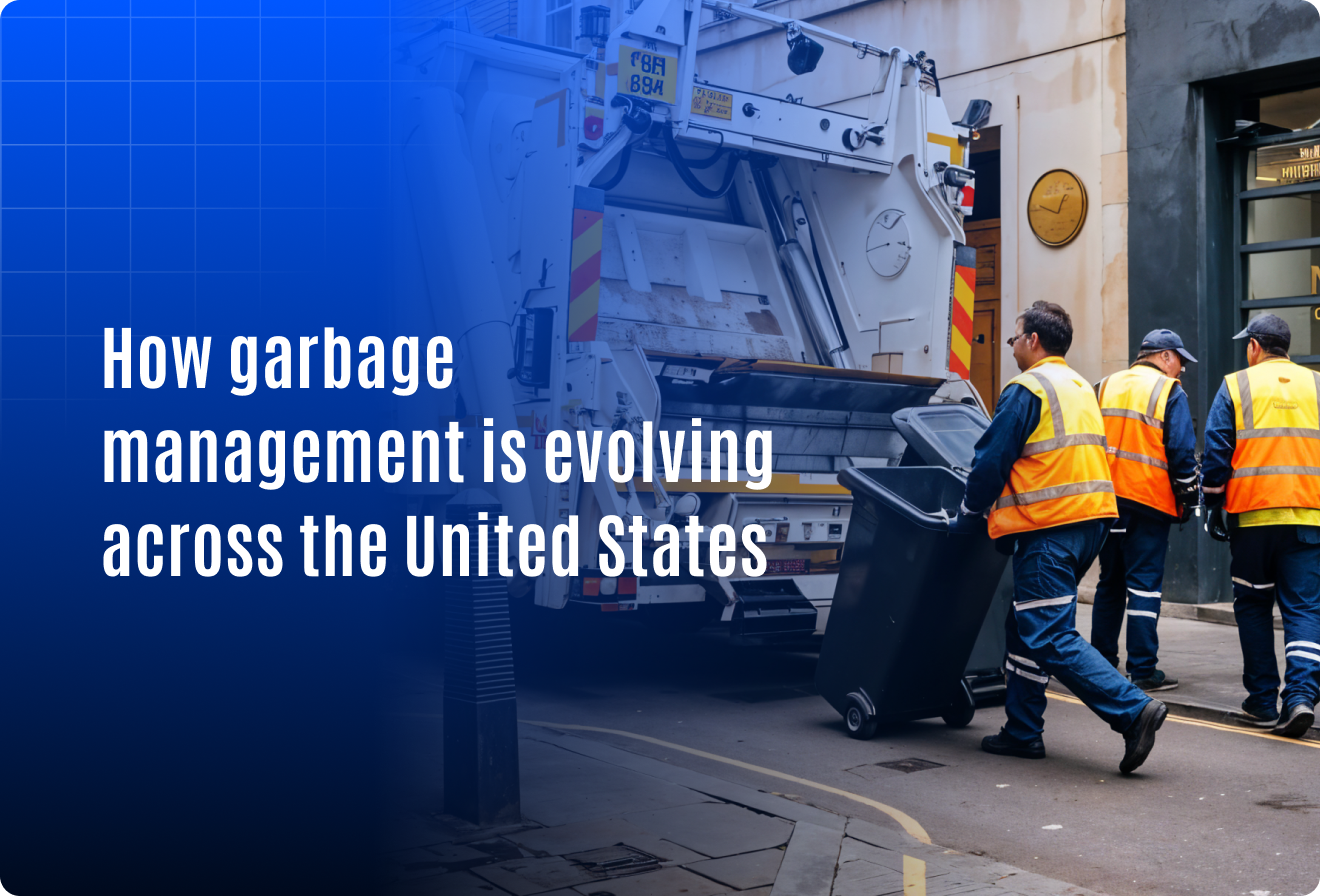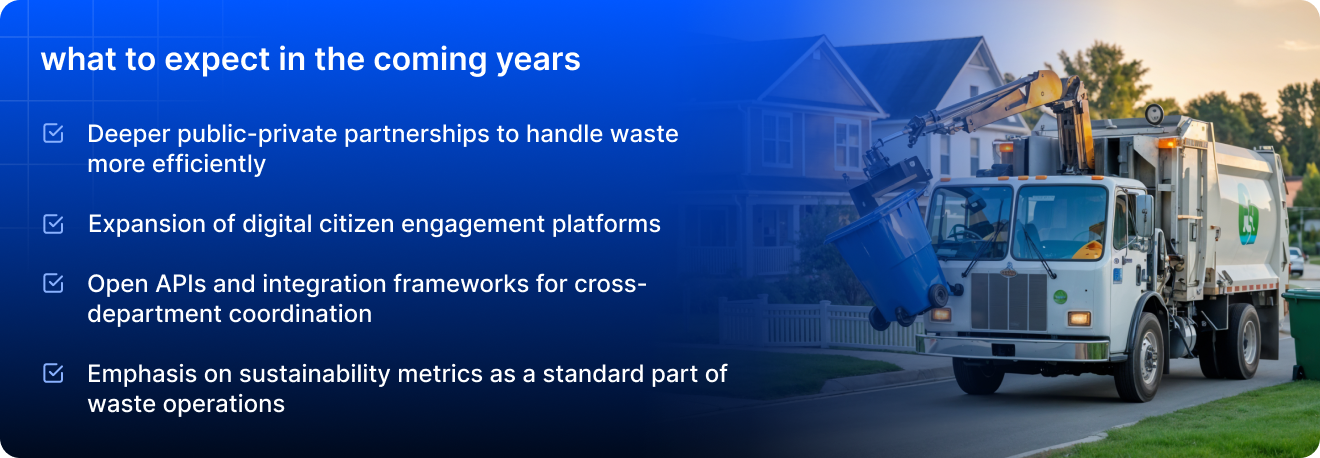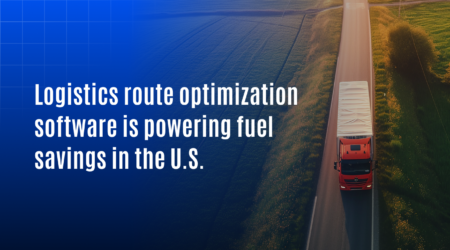How garbage management is evolving across the United States

The United States produces more waste than any other country in the world.Over 292 million tons of municipal solid waste each year, averaging nearly 5 pounds per person per day, according to the EPA. Managing this massive volume of garbage has become increasingly complex. Especially with rising urban populations, aging infrastructure, and growing environmental concerns. To meet these demands, garbage management in the U.S. is undergoing a digital transformation, adopting smart tools, predictive analytics, and data-backed strategies to streamline operations. Moreover, it helps cut costs and build a more sustainable future.
Major challenges in traditional garbage management
Despite decades of effort, many cities and private operators still face significant hurdles in waste collection and disposal. Key challenges include:
- Inefficient route planning
Static or manual scheduling often leads to missed bins, unnecessary fuel usage, and longer travel times. - Overflow and underutilization
Bins in commercial or high-density areas may overflow quickly, while others remain half-empty for days, wasting resources and creating hygiene risks. - Lack of citizen involvement
Residents have no real-time way to report missed pickups or overflowing bins, resulting in service delays and poor satisfaction. - High operating costs
With fuel, labor, and vehicle maintenance consuming major budgets, many waste collection operations struggle with profitability. - Environmental impact
Inefficient garbage handling contributes to more landfill use, higher emissions, and increased non-compliance with sustainability laws.
What’s driving the evolution
A combination of regulatory, environmental, and technological forces is reshaping how the U.S. approaches garbage management. It basically includes:
- Stricter regulations
Cities are enforcing new landfill restrictions, recycling mandates, and sustainability reporting standards. California, New York, and other states are examples leading the way with zero-waste goals and clean fleet mandates. - Corporate and municipal ESG goals
Both public and private sector organizations are investing in greener operations as part of their environmental, social, and governance (ESG) commitments. - Technology adoption
From AI and IoT to cloud platforms and telematics, cities are adopting new tools to monitor, predict, and improve waste collection processes. - Data-driven operations
The shift from reactive to predictive waste handling allows better decision-making, resource allocation, and transparency in municipal performance.
How garbage management is evolving today
Across the U.S., waste collection is moving beyond basic logistics to become more intelligent and insight-driven. Here’s how:
- Bin monitoring and automation
Bins are digitally tracked for their location, status, and fill levels. Each bin sends real-time data, including wash status and lifecycle information. This helps teams plan collection jobs, maintain hygiene, and optimize routes without depending on fixed schedules. - Citizen mobile app
Apps allow residents to report issues, track pickup schedules, and receive notifications. Furthermore, helps in improving communication and accountability. - Manager portals and dashboards
Supervisors get a central view of real-time operations, missed bins, team performance, and area-specific waste statistics. - Route optimization tools
Dynamic routing engines consider traffic, fill levels, and service priorities to suggest efficient collection paths, cutting costs and carbon emissions. - Live vehicle tracking
Track trucks in real-time, verify pickups, and resolve on-ground issues faster using GPS and route history data. - Predictive maintenance for vehicles
Avoid breakdowns by scheduling proactive truck servicing based on usage and health data.
The future of garbage management in the U.S.
As new technologies become more accessible, the garbage management landscape will continue to shift. The further roadmap includes:
Thus, municipalities, contractors, and system integrators alike will need to stay ahead of this shift, not just to comply, but to thrive.
Regional innovations & success stories
Several U.S. states and cities are leading by example, displaying how modern garbage management can improve both efficiency and sustainability:
- California
Cities like San Francisco use bin-level sensors and smart routing to support their ambitious zero-waste goals. - New York City
NYC’s Department of Sanitation has integrated GPS tracking and automated collection monitoring to manage high-density urban routes. - Texas
Municipalities in Texas are using waste heat maps and digital dashboards to allocate resources to high-waste neighborhoods effectively. - Florida
Coastal cities are focusing on marine waste monitoring and integrating recycling performance reports to meet clean area initiatives.
Conclusion
Garbage management in the United States is no longer just about collecting waste: it’s about building a smarter, cleaner, and more data-enabled system. By investing in real-time tools, route automation, and citizen communication channels, stakeholders are moving toward a future where waste is not just managed but optimized.




